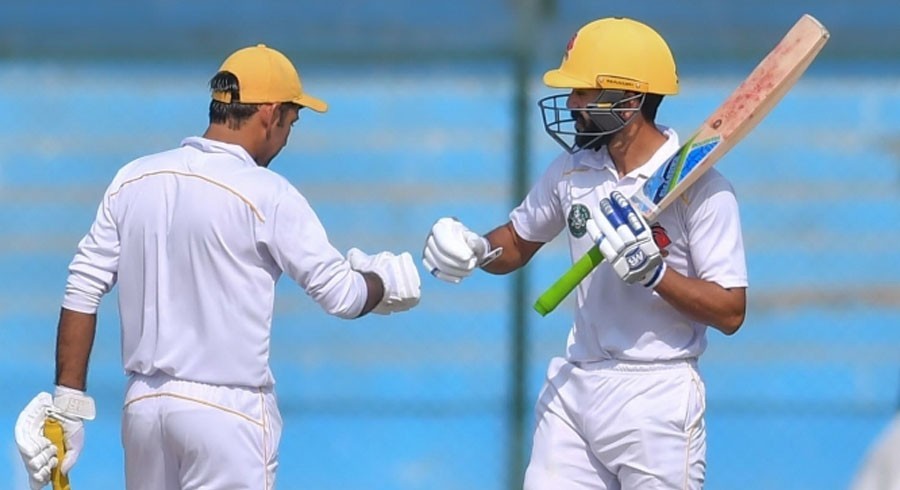A look at this season’s Quaid-e-Azam (QeA) Trophy corroborates Imran Khan’s vision
 PHOTO COURTESY: PCB
PHOTO COURTESY: PCB
A few years back, in pre-coronavirus days, I vividly recall watching a domestic match between two departmental teams on television and thinking to myself, “why would any cricket lover ever go to a cricket stadium to watch PIA play against WAPDA?”
Today, however, with a revamped cricket structure in place, an Australian fast-bowler, Aaron Summers, has announced that he will be joining the Southern Punjab team for the forthcoming Pakistan Cup One-Day tournament. This is heartening news, because unlike County Cricket of England or Shield Cricket in Australia, it is unprecedented for an international cricketer, let alone an Australian, would decide to come play in a domestic, non-T20 league tournament in Pakistan. It goes to show that Imran Khan was absolutely correct in advocating for a region-based cricket structure, one which would bring up the best group of players of the country.
Aaron Summers set to be first Australian to feature in Pakistan domestic cricket
— Cricket Pakistan (@cricketpakcompk) December 26, 2020
Read more: https://t.co/tCLGRWUiC1#PakistanCup pic.twitter.com/p2wt45pbYx
A look at this season’s Quaid-e-Azam (QeA) Trophy corroborates Imran Khan’s vision. Since the matches were telecast live, along with a professional and experienced commentary team, it gave previously unheard-of domestic players an excellent platform to showcase their talent in front of millions of people watching on their TV screens. Additionally, since there were only six teams, the level of competition and performances at display was at par with any international match.
Some of the major takeaways from this tournament are as follows:
One thing should be evidently clear to all pundits of Pakistan cricket: there is no dearth of spinning talent in the domestic setup. This season, the top three highest wicket-takers are all spinners: Sajid Khan (62), Nouman Ali (61) and Zahid Mehmood (52).
Since Yasir Shah is unfortunately no longer the wicket-taking goliath he once was, it is high time that at least one of these talented bowlers is given a proper chance to take up the mantle of Pakistan’s premier spin bowler in Test match cricket.
Along with spinners, this season’s QeA trophy has shown that there are a number of strong candidates who can solve Pakistan’s middle-order woes.
A look at the statistics illustrates that amongst the top 5 run-scores, four are top/middle-order batsmen, including Kamran Ghulam (Khyber Pakhtunkhwa), Saud Shakeel (Sindh), Agha Salman (Southern Punjab) and Usman Salahuddin (Central Punjab). Interestingly, these players have scored more runs than international, experienced players such as Sharjeel Khan and Asad Shafiq, and deserve a call up to the national side.
1218 runs ✅
— Cricket Pakistan (@cricketpakcompk) January 3, 2021
Kamran Ghulam has broken the record for most runs in a single season of Quaid-e-Azam Trophy 👏#QeA20Final pic.twitter.com/RizaHWk3aI
It is high time that ‘occasional performers’, who appear to have taken the green cap for granted, such as Abid Ali, Shan Masood, Imamul Haq, and Haris Sohail be sent back to domestic cricket, to rediscover their form and hunger for runs, and replaced by young, in-form gusty batsmen, who if given proper chances, hopefully will make match-winning hundreds not just on flat pitches, but on seaming and bouncy tracks of England, Australia, and South Africa as well.
With 30 of your top players on international duty, it could have been expected that the regional teams would be playing it safe and sticking with all experienced faces during the tournament to cover for the absentees. However, it was refreshing to see that due to the Second XI tournament, in-form youngsters were tried out in place of the old, tried-and-tested players.
One such shining example of a consistently underperforming player was Ahmed Shehzad. Previously, he would always be part of the playing squad irrespective of form or performance, however, now with increased competition for places, this mediocre player was thankfully replaced after the first few matches.
Furthermore, this strong format enabled teams to immediately replace players who opted to play in international T20 leagues. To illustrate, when Anwar Ali went to the Lanka premier league, a young gun Shahnawaz Dhani took his spot and performed admirably with a lot of passion for his team. In the same vein, when Usman Shinwari left, he was replaced by Muhammad Waseem and Irfanullah Shah in the KP team, both of whom impressed with wickets and better commitment to the team.
However, now that we have created a new and competitive playing format, through which the best talent of the country has emerged, it is yet to be seen if our new chief selector, Mohammad Wasim, has enough nerve to deal with nepotism/favoritism and actually select these performers, instead of caving in to selecting ‘big names’ or ‘experienced players’.
We must take a leaf out of India’s book and see how they reward the best and consistent performers of IPL and Ranji Trophy, by picking them for the national team, not just as 12th man, but actually giving them proper chances to express themselves at international level. Because merit (rather than experience or big names) is promoted, the results are for everyone to see: India won the recently concluded T20I series in Australia, and has now drawn the ongoing Test series as well by comprehensively winning the second match.
Conversely, since we have been ignoring our domestic performers, it is reflected in our dismal performances abroad. In our last three Test series in Australia, we were thrashed convincingly and have failed to even draw a Test match there in the last 20 years!
To conclude, if the above-mentioned players of QeA Trophy are not selected for our upcoming series, then we might as well wrap-up this new format altogether, because if the top performers of your premier national tournament are not given a chance, that will shatter the confidence of each and every domestic player, since it will send the message that even the highest run-scores or the highest wicket-takers are not deemed fit to wear the Pakistan cap.